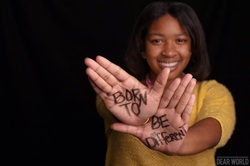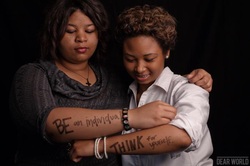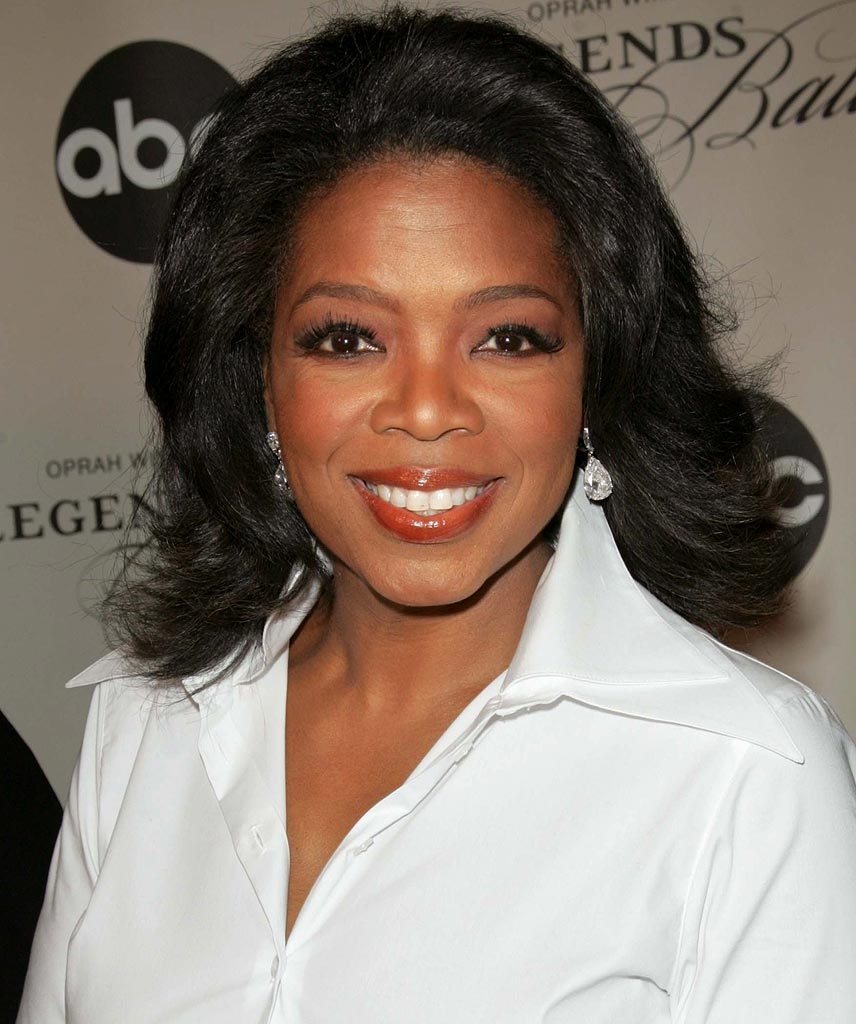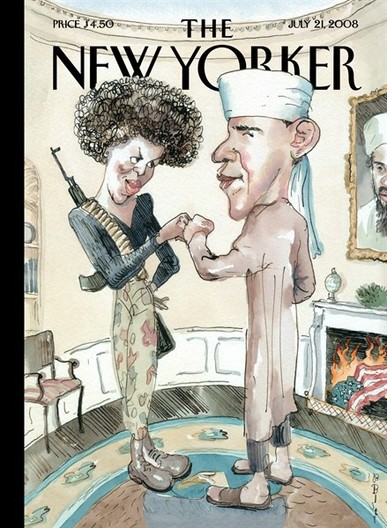The theme of identity are present in nearly all of the stories within Packer's
Drinking Coffee Elsewhere.

"Despite the fact that U.S. Black women face common challenges, this neither means that individual African-American women have all had the same experiences nor that we agree on the significance of our varying experiences" -Patricia Hill Collins
An Interview with ZZ Packer
Q: You’ve written numerous short stories and edited anthologies of stories. For you, what characteristics make the most powerful stories?
A: Voice and resonance…Many writers believe that voice, which is character-based, is the same as style, which I believe is more author-based. The writer almost always has her own style, but I believe that in addition to being drawn to a particular author’s style, readers are also drawn to the singularity of the fictive voice, which is somewhat variant from work to work….Sometimes the piece itself has a certain voice all its own, but more often than not—especially in stories—the voice emanates from a character, usually the protagonist, and it is this strong voice which compels us to hear that character out. Perhaps this amounts to saying that character is what makes for powerful stories, but I believe the two are different; great characterization is essential, but its the voice brings the character to life.
A: Voice and resonance…Many writers believe that voice, which is character-based, is the same as style, which I believe is more author-based. The writer almost always has her own style, but I believe that in addition to being drawn to a particular author’s style, readers are also drawn to the singularity of the fictive voice, which is somewhat variant from work to work….Sometimes the piece itself has a certain voice all its own, but more often than not—especially in stories—the voice emanates from a character, usually the protagonist, and it is this strong voice which compels us to hear that character out. Perhaps this amounts to saying that character is what makes for powerful stories, but I believe the two are different; great characterization is essential, but its the voice brings the character to life.
Importance of Identity in Black Women's Literature

Patricia Hill Collins explains the importance of identity in Black women's literature in her book entitled Black Feminist Thought. She explains that "despite differences of age, sexual orientation, social class, region, and religion, U.S. Black women encounter societal practices that restrict us to inferior housing, neighborhoods, schools, jobs and public treatment and hides this differential consideration behind an array of common beliefs about Black women's intelligence, work habits, and sexuality. These common challenges in turn result in recurring of experiences for individual group members" (Collins 25). This is significant while discussing identity in Packer's collection, because even though Black women have similar experiences, they are still individuals because Black women do not define themselves as the common stereotypes we see everyday (mammies, matriarchs, welfare mothers, mules, or sexually denigrated (Collins 99). The oppression of Black women is justified when stereotypes are portrayed and challenging these controlling images is a core theme in Black feminist thought (Collins 79). Self-definitions were designed to resist these negative controlling images (Collins 10). Packer creates identities for her characters which resist and challenge these controlling images of Black women.
Examples in Drinking Coffee Elsewhere of Self-Identitifaction
Packer resists negative controlling images of Black woman by creating unique and relatable identities for her characters. Here are some examples.
"Every Tongue Shall Confess"
Clareese: Extremely caring and devoted Pentecostal woman as a member of her church, and as a nurse.
“The other RNs resorted to callous catchphrases that they banded about the nurses’ station: ‘Just because I care for them doesn’t mean I have to care about them,’ or, ‘I’m a nurse, not a nursery,’ Not Clareese” (Packer 43).
“Two months ago she’d been reading the book of Micah and posed the idea of a Book of Micah discussion group to the Deacon Jeffers and he’d said, ‘Oh, Sister Clareese! We should make you a deacon!’ Which of course they didn’t. Deacons, like pastors, were men—not that she was complaining. But it still rankled that Jeffers had said he’d get back to her about the Micah discussion group and he never had” (Packer 33).
"Our Lady of Peace"
Lynnea: Teacher in inner city Baltimore. Cannot connect with her students, who are also Black. Shows that not all Black people have the same experiences, despite similar challenges
Sheba: Despite a negative background (stabbing a teacher and now living in a home for girls) she is eager to learn and motivated Lynnea to be a better teacher. However, she gets pregnant and her future seems limited.
"Drinking Coffee Elsewhere"
Dina: Yale student. Angry to be in a mostly white setting while they pretend her race doesn’t matter. However, she is not an angry person, befriends a White, lesbian girl, Heidi.
"Speaking In Tongues"
Tia: Young girl who was raised very religiously. Longing for her mother’s love—goes to Atlanta to find her. Very independent at first, then connects with a pimp named Denzi. The two have sexual encounters, but Tia does not want that kind of relationship, she is just looking for someone to connect with because she has failed to connect with her faith (has not experienced speaking in tongues while praying like others.)
"Every Tongue Shall Confess"
Clareese: Extremely caring and devoted Pentecostal woman as a member of her church, and as a nurse.
“The other RNs resorted to callous catchphrases that they banded about the nurses’ station: ‘Just because I care for them doesn’t mean I have to care about them,’ or, ‘I’m a nurse, not a nursery,’ Not Clareese” (Packer 43).
“Two months ago she’d been reading the book of Micah and posed the idea of a Book of Micah discussion group to the Deacon Jeffers and he’d said, ‘Oh, Sister Clareese! We should make you a deacon!’ Which of course they didn’t. Deacons, like pastors, were men—not that she was complaining. But it still rankled that Jeffers had said he’d get back to her about the Micah discussion group and he never had” (Packer 33).
"Our Lady of Peace"
Lynnea: Teacher in inner city Baltimore. Cannot connect with her students, who are also Black. Shows that not all Black people have the same experiences, despite similar challenges
Sheba: Despite a negative background (stabbing a teacher and now living in a home for girls) she is eager to learn and motivated Lynnea to be a better teacher. However, she gets pregnant and her future seems limited.
"Drinking Coffee Elsewhere"
Dina: Yale student. Angry to be in a mostly white setting while they pretend her race doesn’t matter. However, she is not an angry person, befriends a White, lesbian girl, Heidi.
"Speaking In Tongues"
Tia: Young girl who was raised very religiously. Longing for her mother’s love—goes to Atlanta to find her. Very independent at first, then connects with a pimp named Denzi. The two have sexual encounters, but Tia does not want that kind of relationship, she is just looking for someone to connect with because she has failed to connect with her faith (has not experienced speaking in tongues while praying like others.)
Modern Controlling Images of Black Women
There are many negative images of Black women in today's media that many of us see, but do not realize how damaging they can be. These are just a few examples.
|
Sexualized and Ghetto Woman: Internet comedian, GloZell, plays a stereotypical "ghetto" Black woman who dyes her hair with Kool-Aid, and wears a push-up bra to get her man back.
|
Black Woman and Hip Hop
"The growing influence of television, radio, movies, videos, CDs, and the Internet constitute new ways of circulating controlling images. Popular culture has become increasingly important in promoting these images, especially with new global technologies that allow U.S. popular culture to be exported throughout the world. Within this new corporate structure, the misogyny in some strands of Black hip-hop music becomes especially troubling. Much of this music is produced by a Black culture industry in which African-American artists have little say in production" (Collins 85).
This video explains how women, specifically Black women, are sexually objectified. Men and women involved in the hip-hop industry discuss the negative influences of how women are portrayed in videos. And, Irv Gotti, a record executive, shows how this problem is often ignored.
|
|
|
|
Jay-Z's "Big Pimpin'" was the most successful single from his fourth album, it reached number 18 on The Billboard Hot 100 and is on Rolling Stone's updated 2010 list of "The 500 Greatest Songs of all Time." The video on Youtube has 2 million views, but considering the fact that it was released in April 2000, it has most likely been viewed many times on TV channels like MTV and BET before Youtube became popular. The lyrics of the song and images in the video are very sexually degrading for women, and with the success of the song, there are immeasurable negative consequences.
|
"In da Club" was 50 Cent's debut single, released in 2003. It reached number on the Billboard Hot 100, it was nominated for Best Male Rap Solo Performance and Best Rap song at the 46th Grammy Awards. And the music video won Best Rap Video and Best New Artist at the 2003 MTV Video Music Awards. It is also ranked in Rolling Stone's 500 "Greatest Songs of All Time." This video has 108 million views, suggesting that the negative images portrayed by 50 Cent have greatly influenced today's youth.
|


